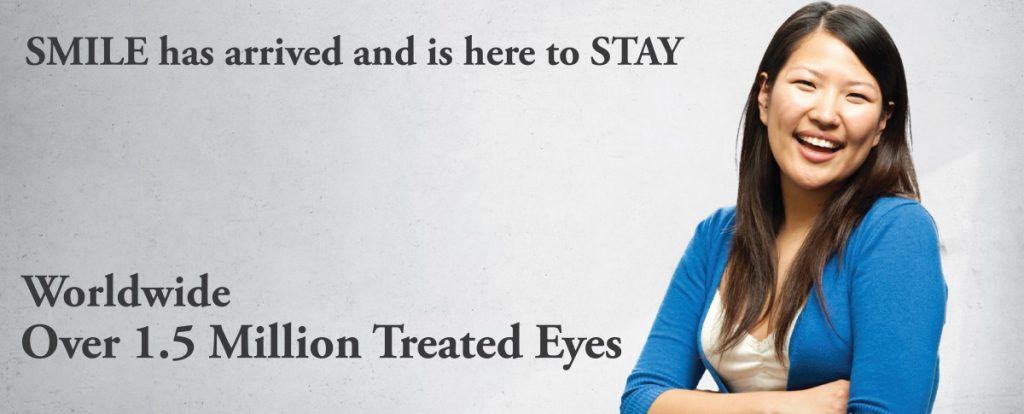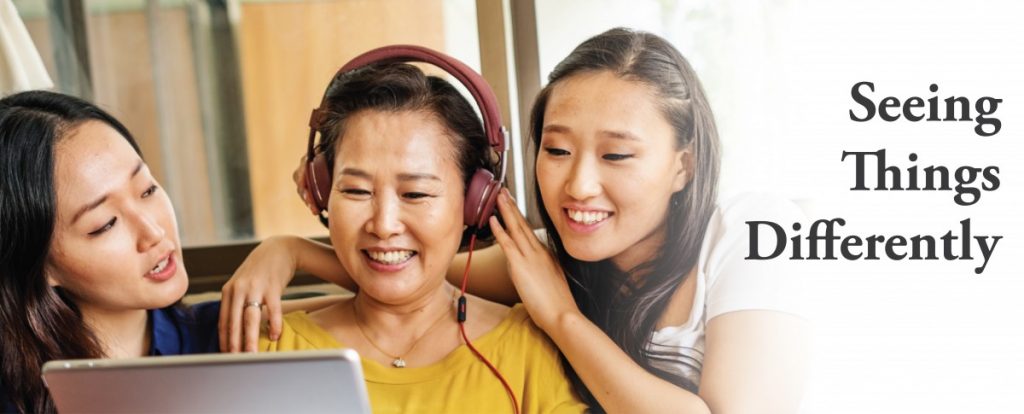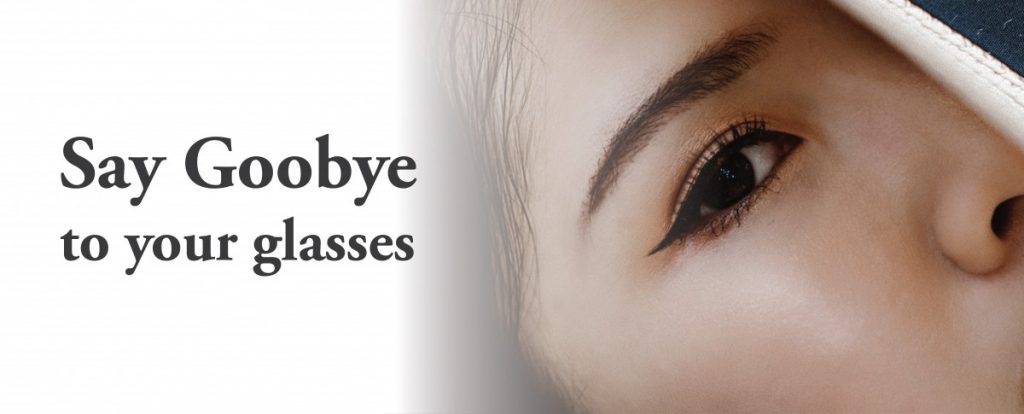Imagine Clear Vision at Any Time Anywhere –
Laser Vision Correction makes it possible
Good vision is something that we all want for everything – our daily activities, our adventure trip, our work and etc. Some people have it naturally while others have refractive errors such as nearsightedness, farsightedness and astigmatism.
Eyeglasses and contact lenses offer a good solution to those who have such an eye condition. However, some consider them a great inconvenience. They want to see clearly without any visual aids.
These days, we are blessed that the medical advancement makes it possible for us to gain back clear vision. With this being said, we are aiming on a long-term vision correction other than ordinary glasses or contact lenses – Laser Vision Correction (LVC).
This field has seen many developments within a span of 30 years. In particular, the three most widely performed techniques today (PRK, FemtoLASIK and SMILE) are able to treat most refractive errors very effectively and even gently. With the most advanced procedure – SMILE, it supports a comfortable patient experience with its innovative minimally invasive method.
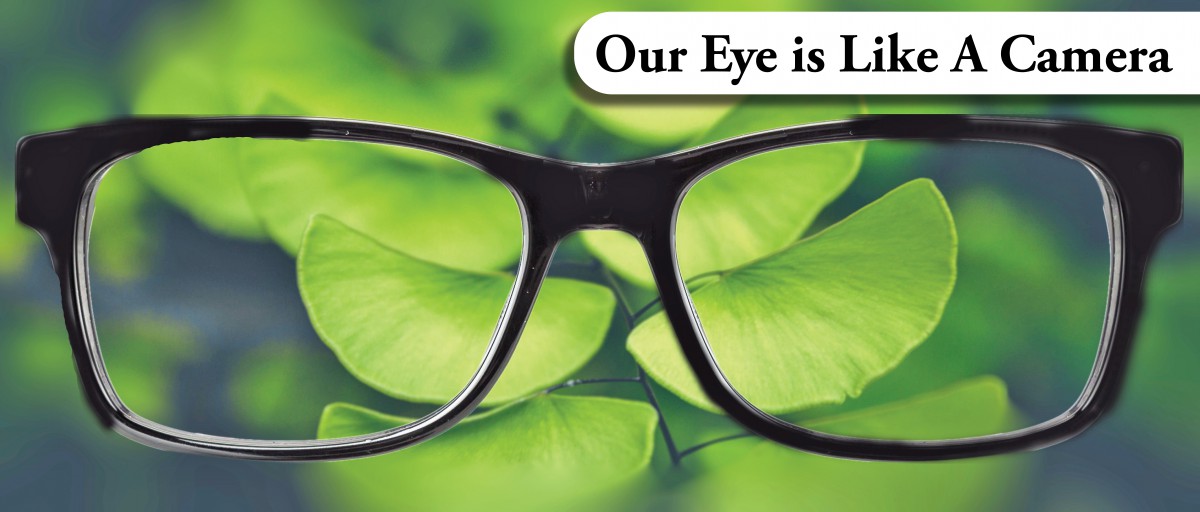
Human eyes are amazing. Being the second most complex organ of human body, the eye is the gateway to one of our five senses – vision.
Our eye works like a camera which gathers and focuses the lights to form an of image of the object onto a film. The main components in our eyes that contribute to clear vision are the cornea, crystalline lens as well as the size and shape of the eyeball.
In a normal healthy eye, the light from an object passes through the cornea and focused directly on the retina at the back of the eye where a clear image is formed. When the dimensions of the main components are not aligned, the light will not come to a clear focus on the retina, which results in refractive errors such as shortsightedness (myopia), farsightedness (hyperopia) or astigmatism.
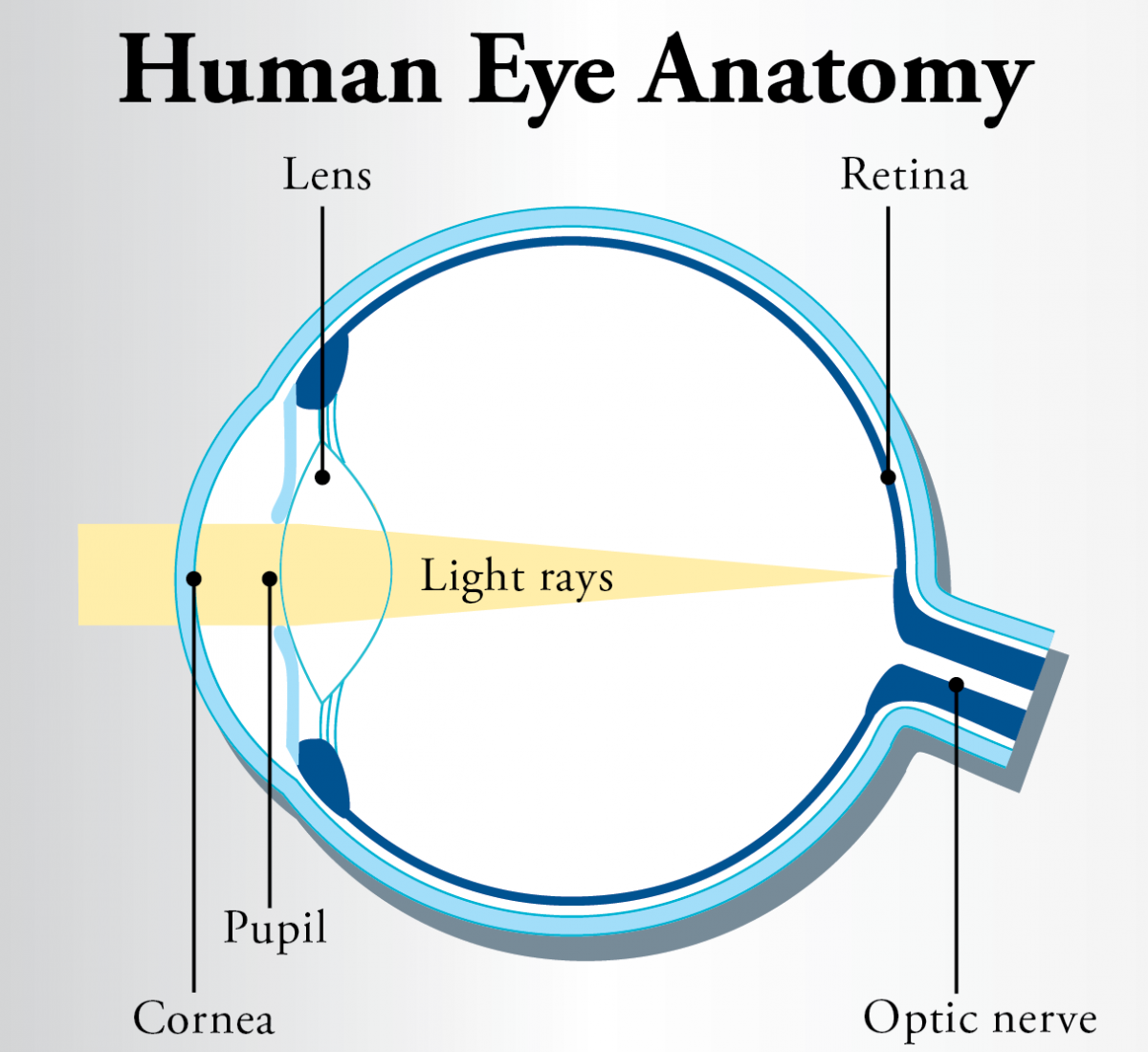
In a normal healthy eye, the light from an object passes through the cornea and focused directly on the retina at the back of the eye where a clear image is formed. When the dimensions of the main components are not aligned, the light will not come to a clear focus on the retina, which results in refractive errors such as shortsightedness (myopia), farsightedness (hyperopia) or astigmatism.
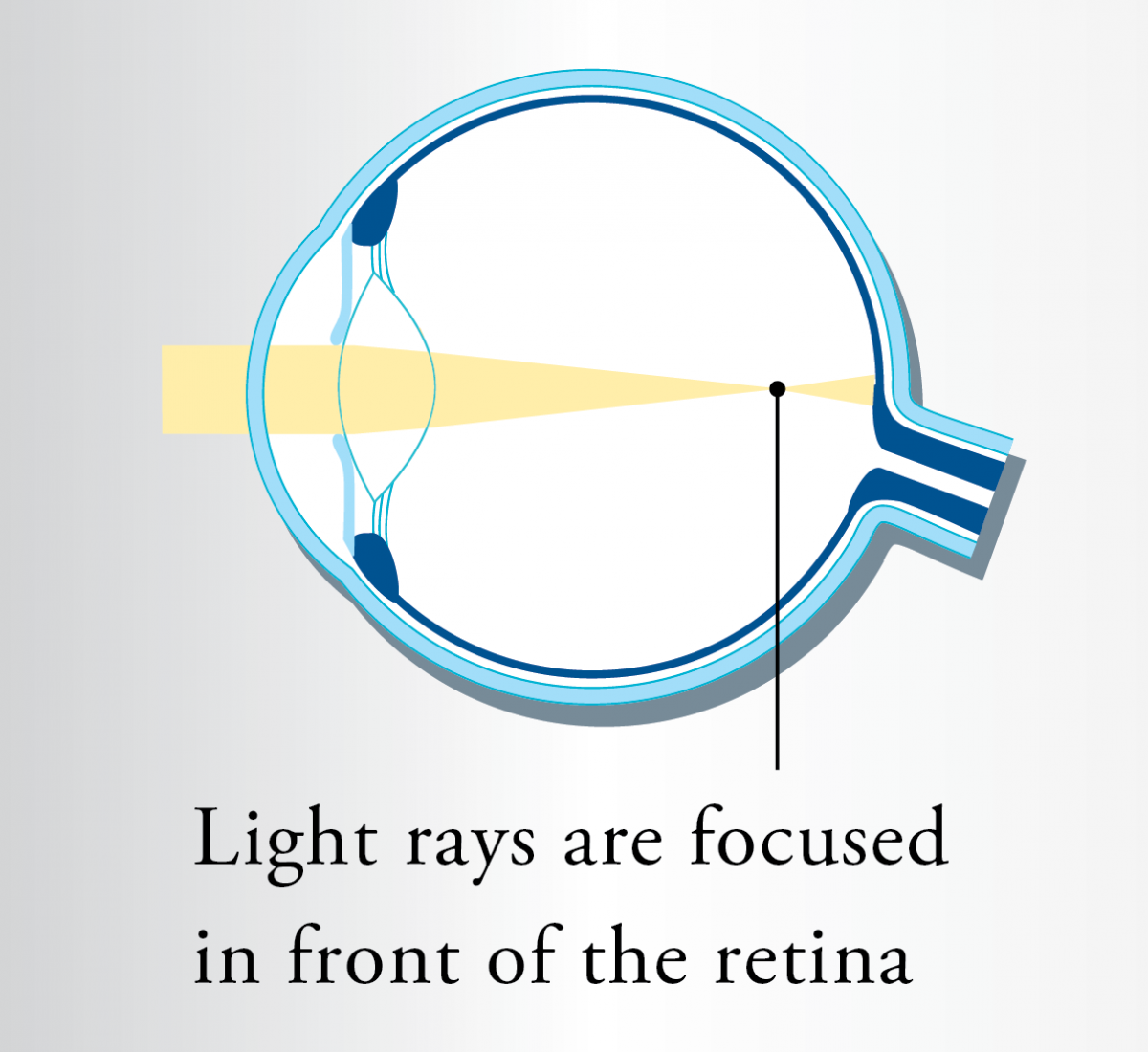
Shortsightedness
Shortsightedness happens when the cornea is more curved than normal and/or the eyeball is longer than normal, causes the light rays to focus in front of retina. The distant objects appeared to be blurry but close up objects are clear.
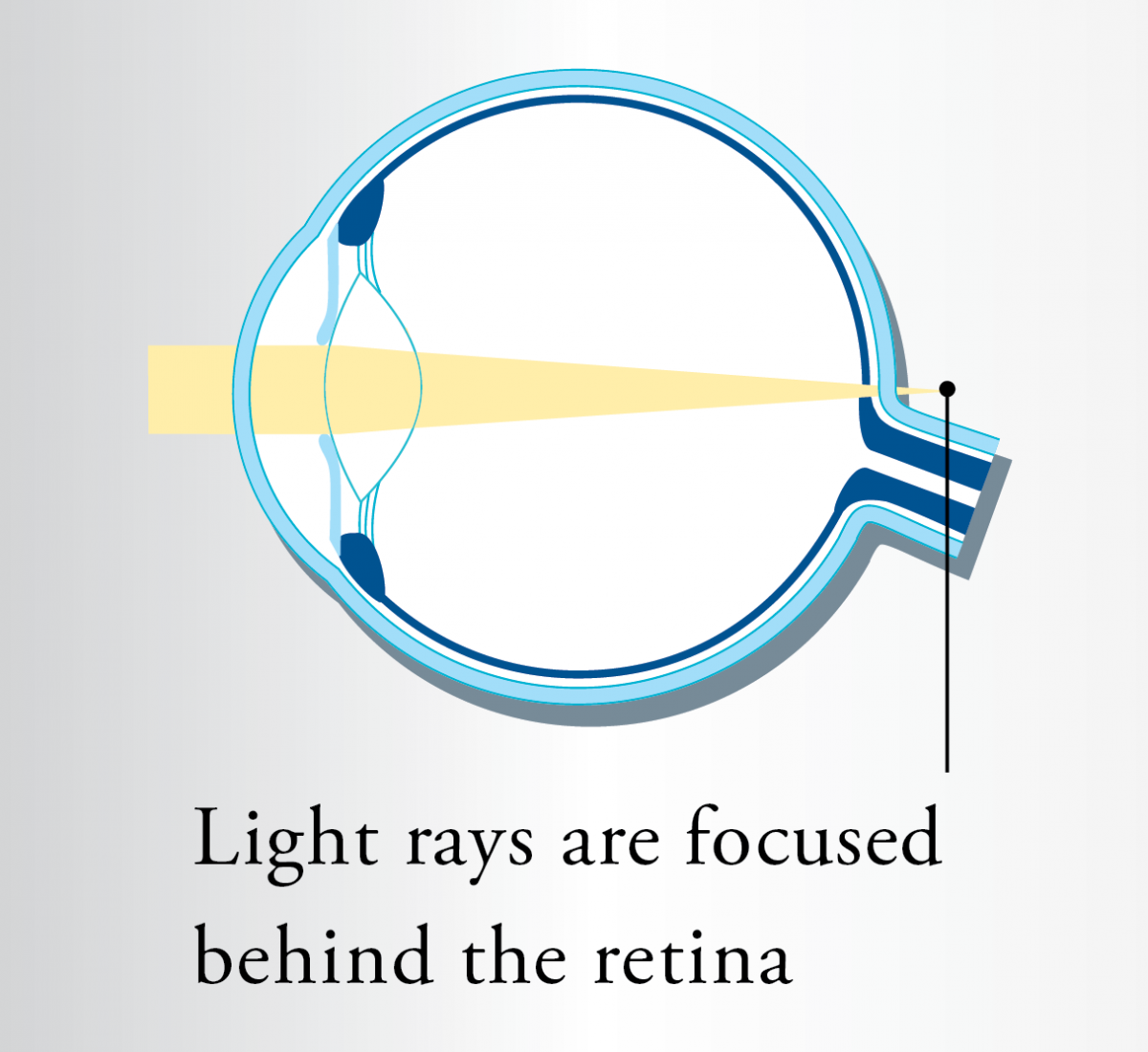
Farsightedness
Farsightedness occurs opposing to shortsightedness whereby the cornea is less curved than normal and/or the eyeball is shorter than normal. As a result, the light focus falls behind the retina and affecting the close up vision but distant vision is usually unaffected.
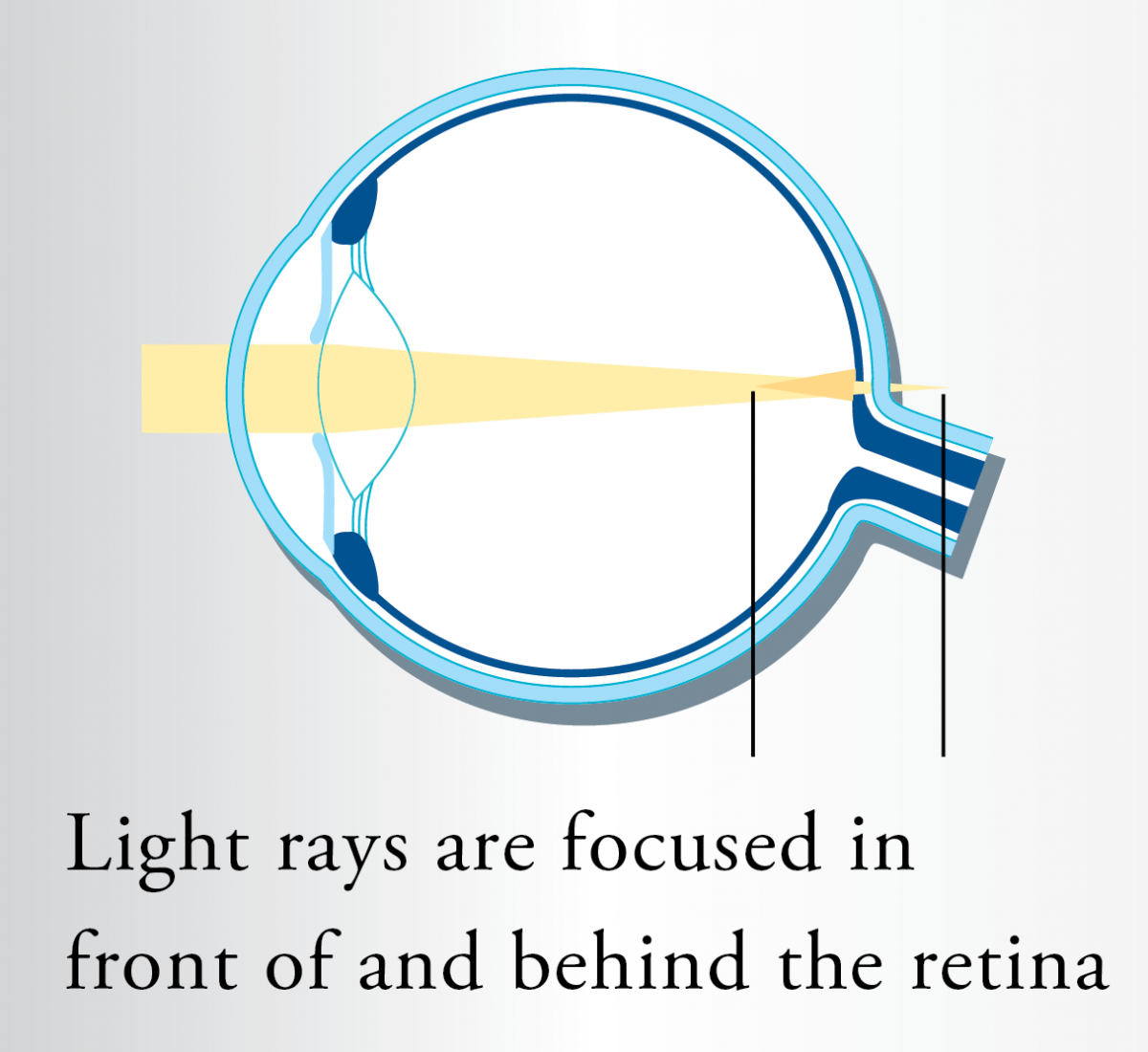
Astigmatism
Astigmatism is caused by the irregular shape of the cornea and the light passes through focuses on more than one point. Both distant and close up vision are generally affected.

SMILE is the most recently introduced type of Laser Vision Correction. This small incision, minimally invasive, flapless procedure reshapes cornea with just one laser – Femtosecond. The highly precise Femtosecond laser carves a small piece of tissue (lenticule) inside the cornea which is then removed through a small incision of 2 to 4mm (80% smaller compared to LASIK). Its outstanding cutting precision, exceptional speed and gentle treatment make it an ideal platform for advanced corneal surgery.
SMILE received its FDA approval in 2016. To date, over 1.5 million SMILE treatments have been performed worldwide. Up to now, there are over 1700 surgeons using SMILE in over 70 countries.
The technology behind SMILE was recently featured in the Scientific Background on the Nobel Prize in Physics 2018.
What are the benefits of SMILE?
- Minimally invasive technique acts much more gentle on the cornea.
- Quick procedure, only takes an average time of 24s to complete the treatment.
- 80% smaller incision (side-cut) compared to LASIK.
- Low risk of dry eye with the help of small incision.
- Minimal cornea tissue intervention offers potential for preserved corneal biomechanical stability.
- Fast visual recovery. Patients can normally return to work shortly after procedure.
- No flap-related complications.
- Laser is odorless and it works silently.
Treatment steps:
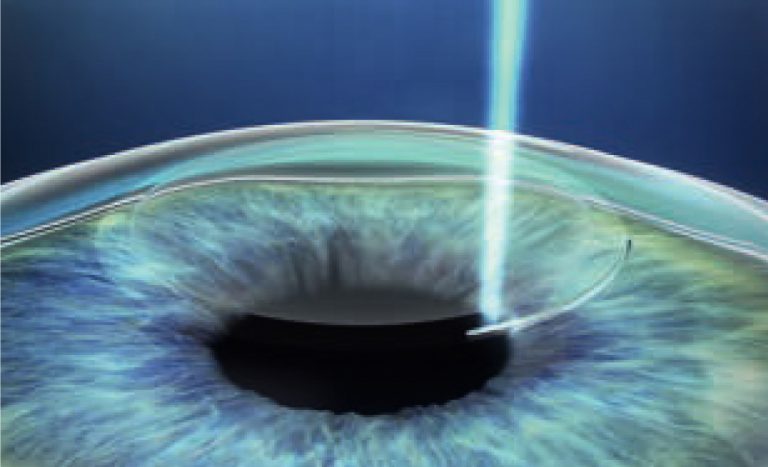
Step 1: Lenticule creation
A small piece of corneal tissue (lenticule) and a small incision are created inside the intact cornea.
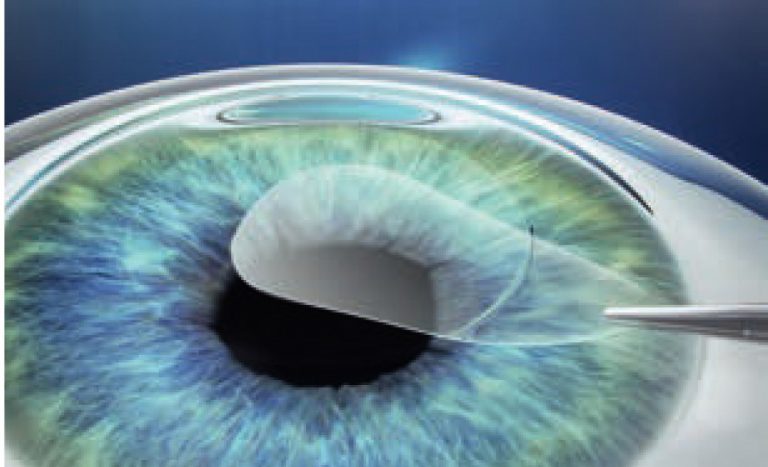
Step 2: Lenticule removal
The lenticule is removed through the incision with minimal disruption to the corneal biomechanics.
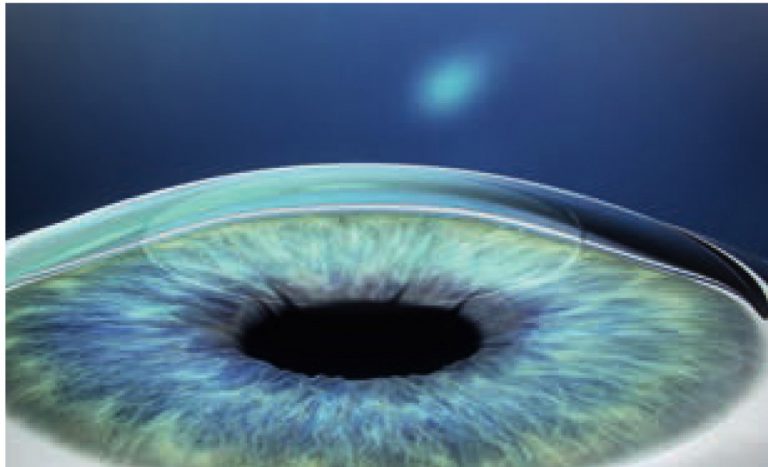
Step 3: Correcting the error
Removing lenticule changes the shape of the cornea, thereby achieving vision correction.
Gérard Mourou, École Polytechnique, Palaiseau, France and the University of Michigan, Ann Arbor, USA, and Donna Strickland, University of Waterloo, Canada, were awarded the Nobel Prize for “their method of generating high-intensity, ultra-short optical pulses”

LASIK has been the most popular method of correcting eyesight surgically since its invention in 90s. The correction is done by using excimer laser to reshape the cornea but with the creation of corneal flap. The flap can be created either by a mechanical instrument (Microkeratome) or using Femtosecond laser. Combined with femtosecond laser, highly precise flap is quickly created and the post-operative flap-related complication is greatly reduced.
In FemtoLASIK procedure, femtosecond laser is used to create a 22mm flap. An excimer laser is then used to reshape the inner corneal tissue underneath the flap. The refractive error is corrected while the flap is gently folded back. Once the reshaping step is done, the flap is repositioned to its original position, protecting the eye like a natural bandage.
Visual recovery following FemtoLASIK surgery is generally faster than with PRK, they may resume daily activities few days after treatment.
Treatment steps:
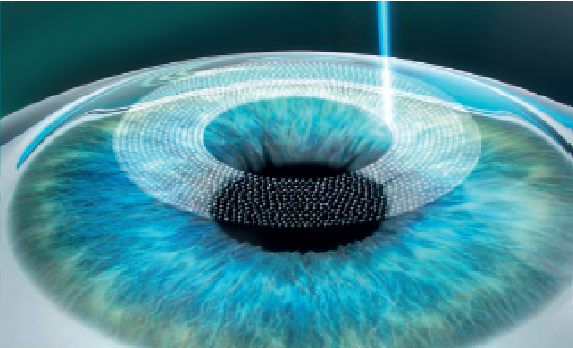
Step 1: Flap creation
Femtosecond laser pulses are used to create a flap on the surface of the cornea.
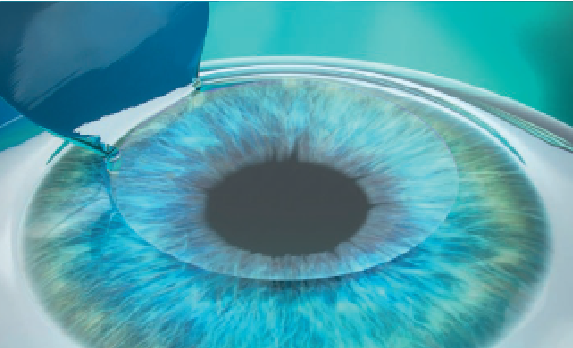
Step 2: Flap is folded back
The flap is folded back, exposing the inner corneal tissue to be treated.
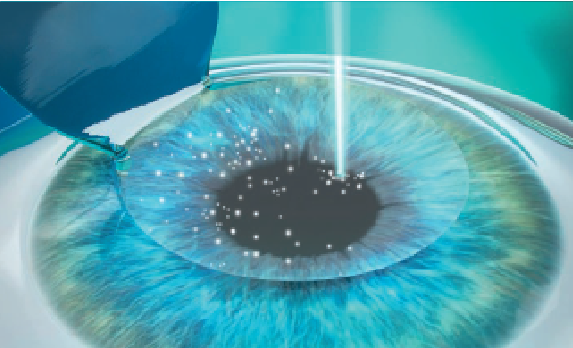
Step 3: Corneal Sculpting
The excimer laser removes the corneal tissue within a few seconds, thereby correcting vision defect.
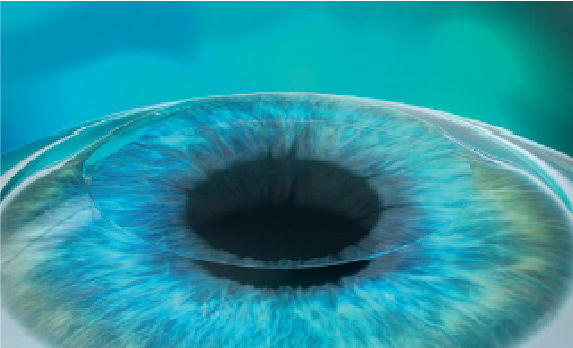
Step 4: Flap is repositioned
The flap is returned to its original position, protecting the eye like a natural bandage.
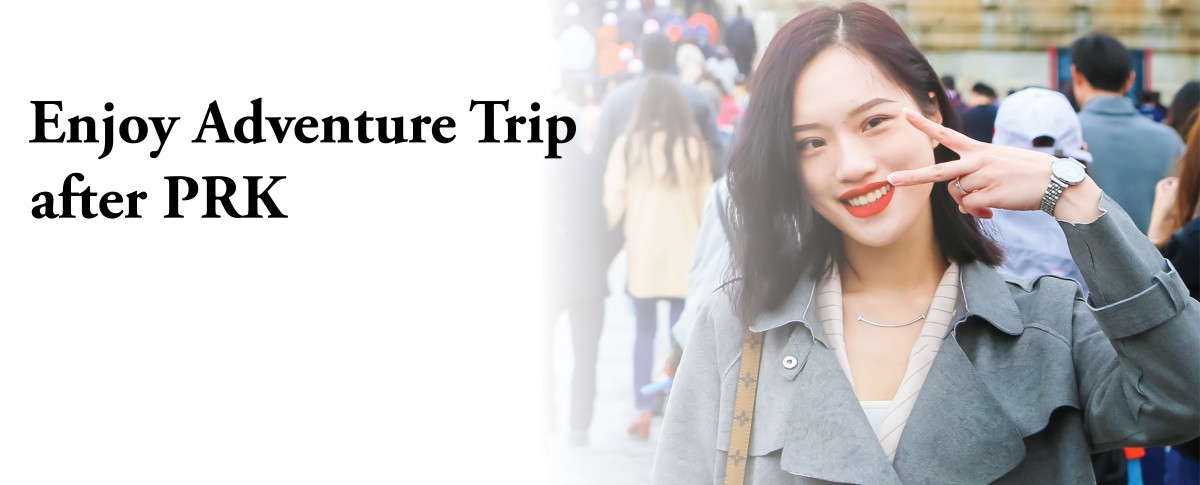
The concept of laser refractive surgery is to change the shape of the outer part of human eye – the cornea, so that lights that enter the eye will be focused on the retina for clear vision. PRK was the first laser vision correction introduced in late 1980s.
This requires a slightly longer visual recovery time and can be accompanied by some discomfort. Generally, pain relieving eye drops will be prescribed during the initial healing period.
PRK is well-accepted today as an excellent solution for candidates with relatively thin cornea or corneal scar.
Treatment steps:
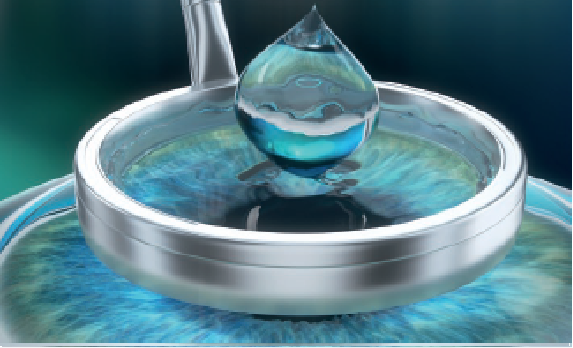
Step 1: Layer preparation
A diluted alcohol solution is applied to the cornea to dissolve the epithelium layer.
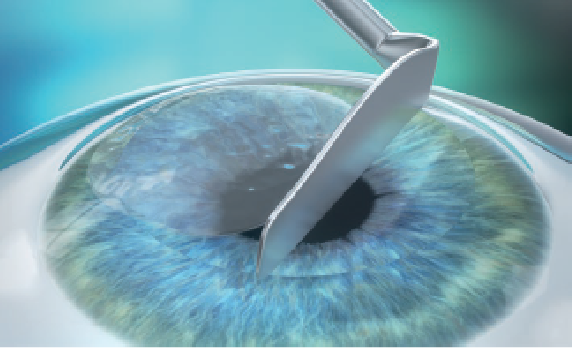
Step 2: Layer removal
The epithelium layer is then removed using an instrument.
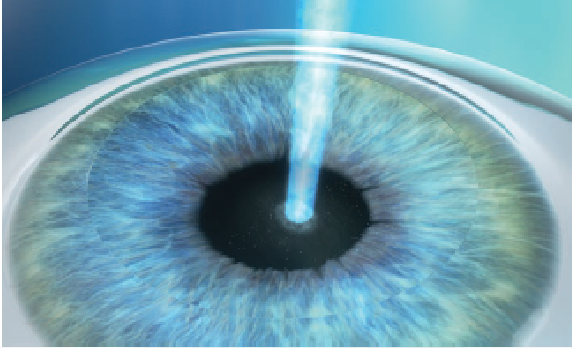
Step 3: Corneal Sculpting
The excimer laser sculpts the corneal tissue within a matter of seconds, to correct vision defect.
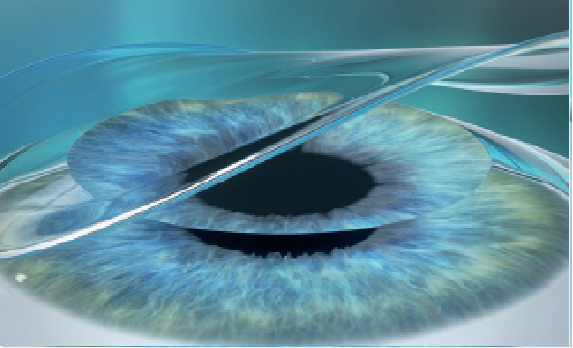
Step 4: Eye protection
Finally, a protective bandage lens is placed over the eye until the epithelium grows back within a few days.
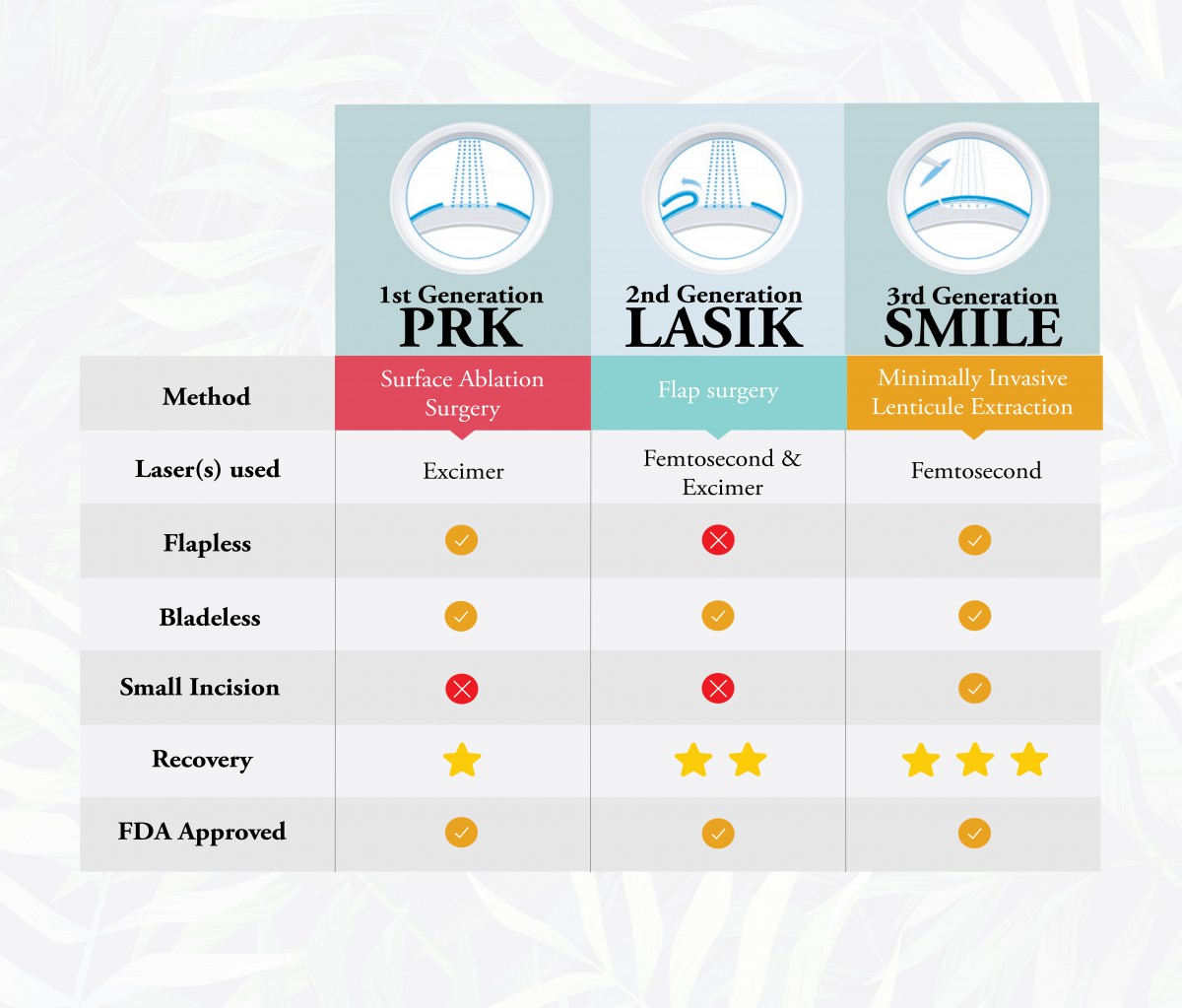
Make an Appointment
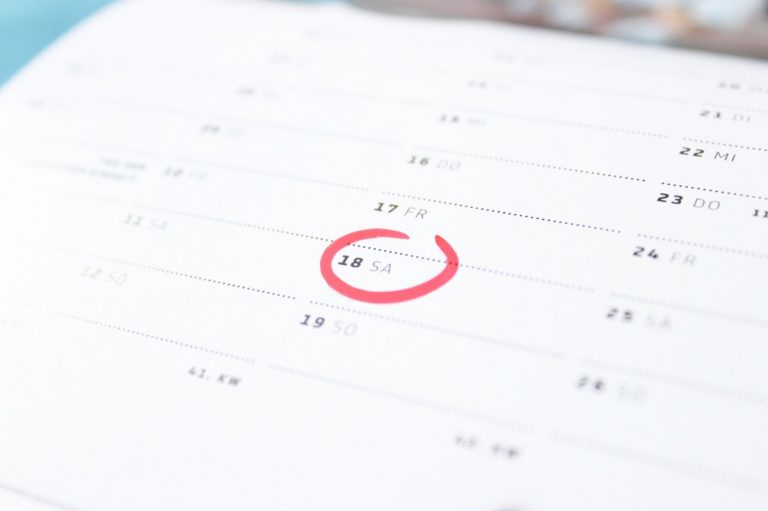
Meet the Expert
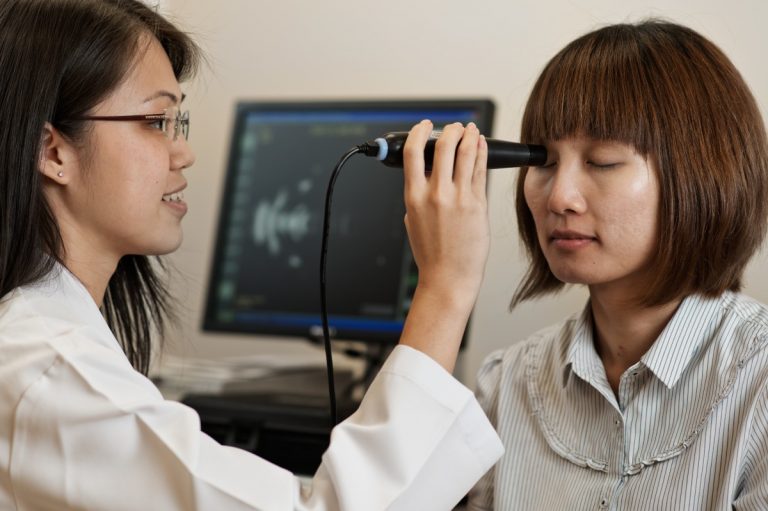
Bye-bye Glasses
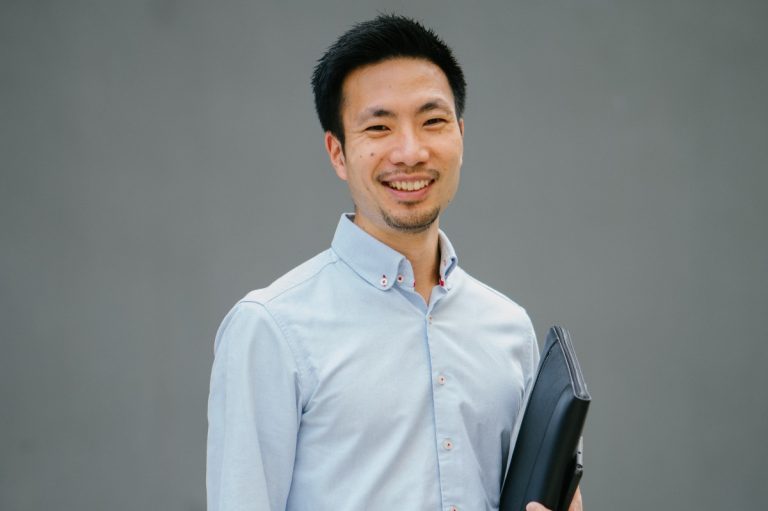

Appointment
Call us to schedule for a thorough Pre-Operative Assessment and lay off your contact lenses as advised.

Consultation
Pre-Operative assessment with a personalized counselling session, followed by Doctor Consultation.

Procedure
Complete the treatment and ready to be discharged in just one day. Enjoy your new vision but please do not forget your post-operative checkups.
-
Is LVC suitable for all glasses wearers?
No. But, LVC is suitable for most of the glasses and/or contact lens wearers who are looking at correcting their vision surgically. A thorough LVC Pre-operative assessment is required to check for your suitability prior to the treatment. -
Will there be a need to put on glasses again after LVC?
Yes, there is a possibility that we might still need glasses at some point in our lives as we will develop presbyopia (difficulty in reading near objects) due to age if we live long enough. LVC aims to reduce the dependency on glasses/contact lenses, some who have had their LVC done get to enjoy a good 30 years of clear vision before their reading glasses come into play. -
Is LVC treatment painful?
No, there is no pain during the treatment but you may feel some pressure and touch around the eyes. -
How long is the recovery time and do I need to stay home after the procedure? How soon can I resume working?
The recovery process differs from one treatment to another. Generally, it will take approximately 3 days to gain back functional vision. We advised you to rest at home for at least one day after the procedure. The period of time for a person to resume working depends on the nature of his/her occupation. We usually advised to take it easy for the first 3 days. -
Do’s and Don’ts after LVC treatment.
Do:-- Get as much rest as possible
- Follow doctor’s instructions on medication regime strictly
- Attend all follow-ups
- Use the eye shields during sleep on the first week
- Take extra care of your eyes
- Contact us immediately when you experience any eye pain/yellowish discharge/red eye/sudden blur of vision
- Do not rub or squeeze your eyes 1 to 2 weeks after treatment
- Do not let water get into your eyes on the first week
- Do not self-medicate (please call us if you are in doubt of the medication regime)
- Do not apply any cosmetic products around the eyes on the first week
- Avoid dusty and smoky places on the first week
- Avoid strenuous exercise on the first week
- No swimming, hot tub, sauna, Jacuzzi, contact sports and refrain from any kind of water sports for 1st month.
-
Is LVC safe? Will LVC cause blindness?
After decades of improvement in LVC technology, refined surgical regime and effective medications, LVC is considered a safe procedure. Of course, all surgeries come with risks. However, the risks of LVC treatment is considered to be very low. There has never been a blindness case directly related to LVC. Post-operative inflammation or infection may lead to blindness, that is the reason why our doctors monitor your eye condition closely after the treatment. -
What are the side effects of LVC procedure?
All surgeries come with certain risks and side effects, LVC treatment will not be an exception. Fortunately, most of the side effects of LVC treatment are short-term and some patients might not experience them at all. The common side effects are dry eye, mild irritation and tearing. Lubricating eye drops will be prescribed to resolve dry eye condition. Mild irritation and tearing usually present for the first few hours after the treatment, patients are advised to close their eyes and rest during this period. Other temporary side effects are glares & haloes and minor vision fluctuation which will usually be stabilized after 3 months. -
How long will the procedure take?
The procedure will usually take 20 to 30mins and patient will be ready to go home after that. -
How do I prepare myself for the LVC assessment?
For those who only wear glasses, you may schedule the LVC suitability assessment anytime at your convenience.- For Soft Contact Lens wearers, you are advised to lay off contact lenses for at least 3 days before your LVC suitability assessment. We advised you to book a date for the assessment so that it is easier for you to gauge the date to cease contact lens wear.
- For people who wear Hard Contact Lens or Rigid Gas Permeable (RGP) lenses, please lay off your contact lenses for at least 2 weeks prior to LVC suitability assessment. We again advised you to book a date for the assessment and cease lens wear 2 weeks before the appointment.
-
If I was found to be a suitable candidate for LVC treatment, what is the next step?
If you are deemed suitable for LVC treatment, you may then schedule for your surgery. Please note that you will need few more days to rest after your surgery. We will assist you in arranging the schedule to include the initial recovery period. -
How do I prepare myself on the day of LVC treatment?
On the day of your treatment, please DO NOT apply any cosmetics, alcohol based perfume, cologne, stop contact lens wear (refer to 9) and NO driving is allowed. You are advised to wear a front-buttoned shirt (make it easy to change if required) and bring a pair of sunglasses. -
Do I need to stay in the hospital after the treatment?
Normally there is no need for patients to stay in the hospital after LVC treatment. However, we are able to advise and make arrangement for those who prefer to be taken care by our professional medical personnel. -
How frequent do I need to be reviewed after the treatment?
Generally, the follow-ups will be scheduled at 1 Day, 3 Days, 1 Week, 1 Month and 3 Months after the treatment. All patients are advised to perform an eye check yearly. -
What can be done if I develop cataract years after I have done LVC?
Cataract is usually age-related eye condition, which means everyone will develop cataract at some point later in our lives and it causes blurring of vision. It requires a surgery (Cataract Removal Surgery) to restore the vision. However, Cataract Removal Surgery is a different procedure from LVC treatment, Cataract Removal Surgery involves removal and replacement of an inner eye structure – crystalline lens, whilst LVC reshapes the outer part of eye – cornea. Therefore, one can still undergo Cataract Removal Surgery if he/she is deemed to be a suitable candidate even with the medical history of LVC. -
For overseas patients – Do I need to attend for all follow-ups? What if I can only spend few days in Malaysia for the treatment?
If you are travelling from overseas or other states in Malaysia, please be in town for about 3 to 7 days after the treatment. The Day-1, Day-3 and Week-1 post-operative visit are very important for us to monitor the recovery progress. Inflammation and infection are more commonly be detected during the first week after treatment and it is the golden time for early treatment. However, for those who are unable to attend every follow-up, they are advised to consult an eye doctor in their next destination on the recommended check-up date. -
If I was found to be NOT suitable for LVC treatment, is there other procedure that I can go for?
If you are found not to be a LVC candidate after the assessment, our doctors will advise the alternatives based on your eye conditions. There are other ways to correct your vision besides glasses and contact lenses, such as Implantable Collamer Lens (ICL), Refractive Lens Exchange (RLE), Cataract Removal Surgery, OrthoKeratology (Ortho-K) and etc.
| Mobile: | +6019 229 8672 |
| Fax: | +603-7491 1407 |
| Location: | 1st Floor, Tower B |
| Email: | [email protected] |
| Operation Hours: |
Monday – Friday: 8.30am – 5.00pm Saturday: 8.30am – 1.00pm |


